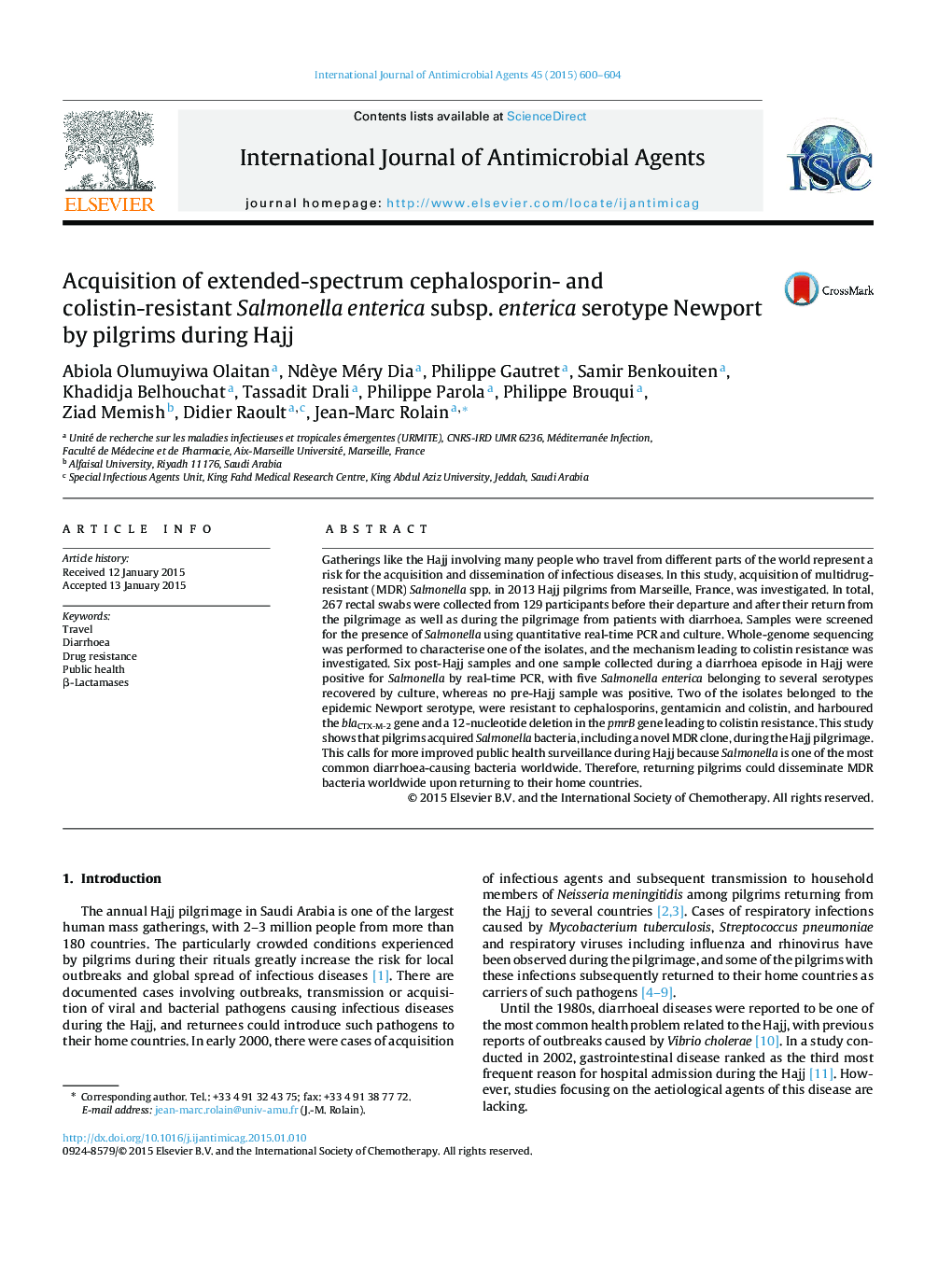| Article ID | Journal | Published Year | Pages | File Type |
|---|---|---|---|---|
| 6117832 | International Journal of Antimicrobial Agents | 2015 | 5 Pages |
Abstract
Gatherings like the Hajj involving many people who travel from different parts of the world represent a risk for the acquisition and dissemination of infectious diseases. In this study, acquisition of multidrug-resistant (MDR) Salmonella spp. in 2013 Hajj pilgrims from Marseille, France, was investigated. In total, 267 rectal swabs were collected from 129 participants before their departure and after their return from the pilgrimage as well as during the pilgrimage from patients with diarrhoea. Samples were screened for the presence of Salmonella using quantitative real-time PCR and culture. Whole-genome sequencing was performed to characterise one of the isolates, and the mechanism leading to colistin resistance was investigated. Six post-Hajj samples and one sample collected during a diarrhoea episode in Hajj were positive for Salmonella by real-time PCR, with five Salmonella enterica belonging to several serotypes recovered by culture, whereas no pre-Hajj sample was positive. Two of the isolates belonged to the epidemic Newport serotype, were resistant to cephalosporins, gentamicin and colistin, and harboured the blaCTX-M-2 gene and a 12-nucleotide deletion in the pmrB gene leading to colistin resistance. This study shows that pilgrims acquired Salmonella bacteria, including a novel MDR clone, during the Hajj pilgrimage. This calls for more improved public health surveillance during Hajj because Salmonella is one of the most common diarrhoea-causing bacteria worldwide. Therefore, returning pilgrims could disseminate MDR bacteria worldwide upon returning to their home countries.
Related Topics
Life Sciences
Immunology and Microbiology
Applied Microbiology and Biotechnology
Authors
Abiola Olumuyiwa Olaitan, Ndèye Méry Dia, Philippe Gautret, Samir Benkouiten, Khadidja Belhouchat, Tassadit Drali, Philippe Parola, Philippe Brouqui, Ziad Memish, Didier Raoult, Jean-Marc Rolain,
